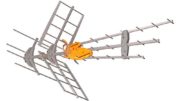This blog is to test out a few things I found around my house that I thought could be put into emergency service to act as TV antennas.
- Two Disposable Aluminum baking sheets 14.25 X 11.5″
- Two metal clothes hangers, base: 16″
- Candy tin top & bottom, dia: 8.5″
- Two metal food trays, 14.75 X 10.75″
- Two toaster oven racks (different sizes) 10.5 X 7.5″ and 10 X 10″
- Wires used to connect to these items ~ 12.5″ long
I use two longer wires, total length ~ 12.5″ with alligator clips on the ends to connect to these various metal objects tested as TV antennas.
I stripped some TV RG-59 coax with an F-connector on one end. I then soldered extra wire to both the center and shield wires

Image 1: Coax Cut and Stripped Ready to Use
and then two alligator clips, one each to the center wire and the shield wire.
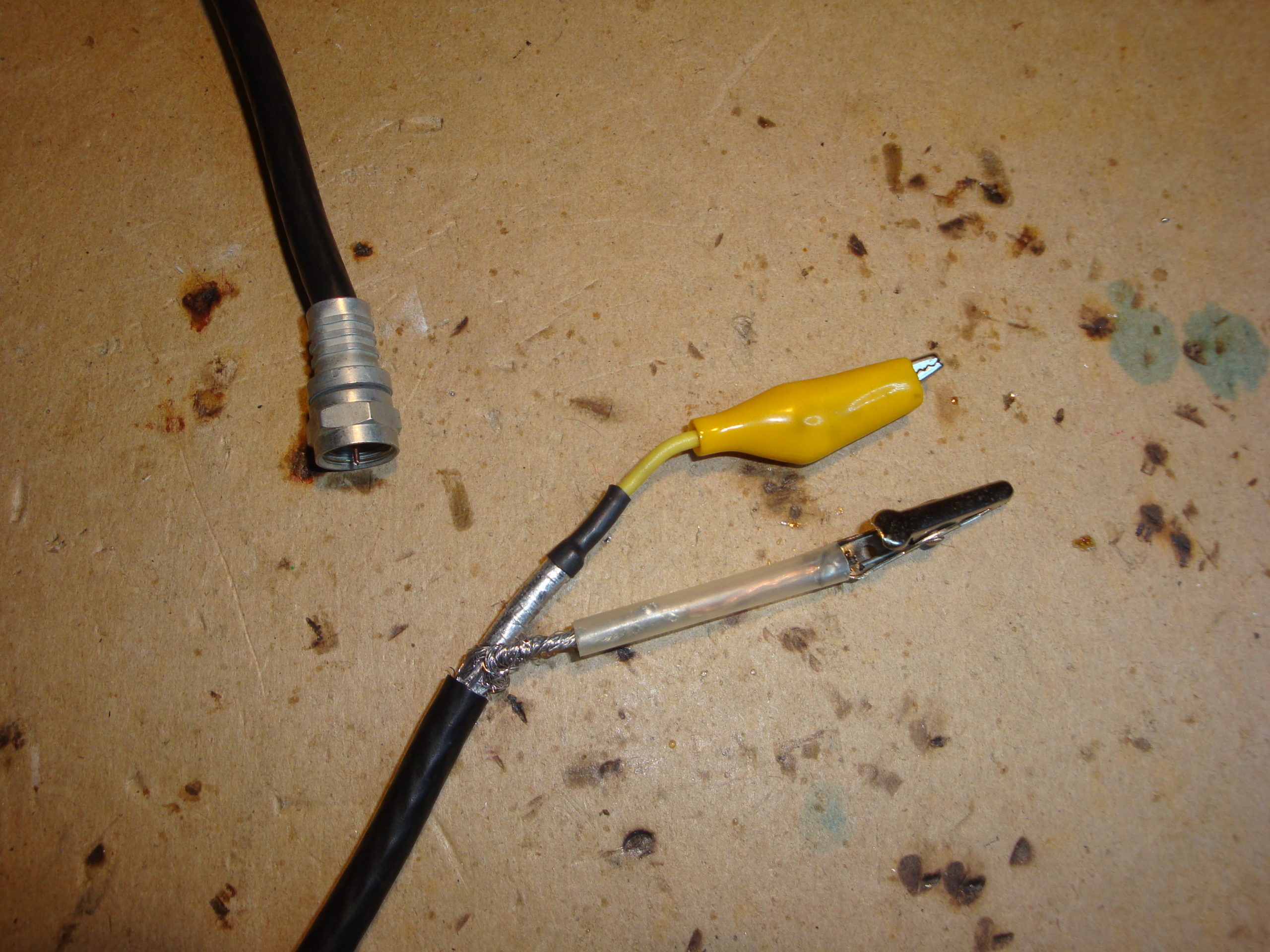
Image 2: Coax with Alligator Clips
I cut a long, white alligator clip wire in half as extenders, if needed. You’ll see I used these in the first set of tests. Looking at these wires, they resembled the old rabbit ears antenna, so I tested the coax and these wires to see what they might have been contributing to the over-all antenna during the tests. This can be seen in the last image of these tests where the wires are being used as an antenna. This is Image #8 near the end of this article.
The tests started with the two aluminum cookie sheets:

Image 3: Aluminum Cookie Sheets
The next test was with the clothes hangers:

Image 4: Clothes Hangers Antenna
Next, I used the candy tin top and bottom. This should be similar to the last test I did with the two loops antenna. See the last blog at: Link: Bowtie Antenna Length Tests
Look at the “Antenna BdµV Data Table” Loop column and compare it to the candy tin column in the table below. The only major difference was with channel 9, where the candy tin antenna was at 30 – 32 BdµV while the loop antenna was 44 BdµV. All other channels were within expected experimental error for tests on different days.

Image 5: Candy Tin Antenn
The next test was with the food trays:
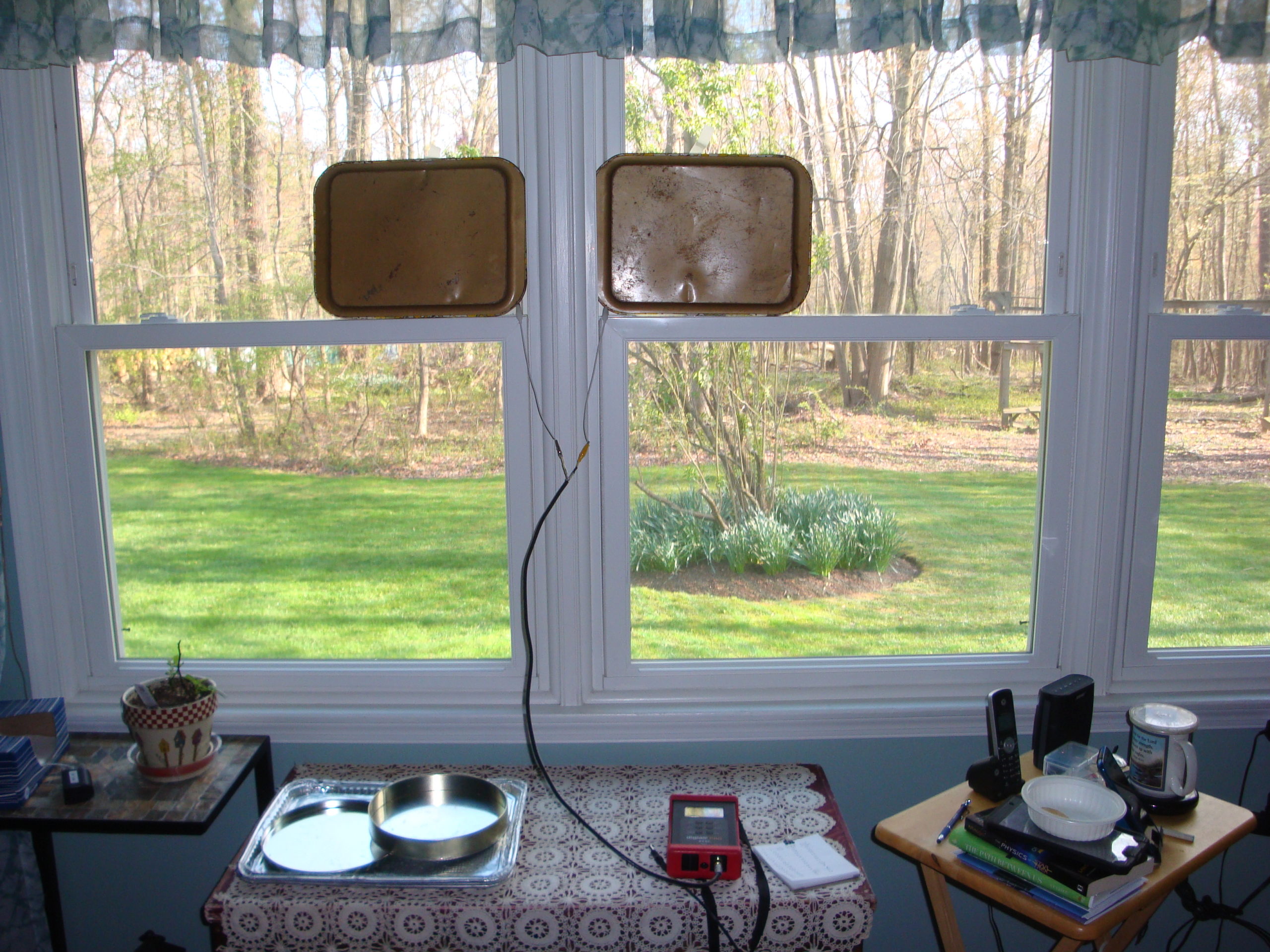
Image 6: Food Trays Antenna
Next, the toaster oven racks antenna:

Image 7: Toaster Oven Racks Antenna
After doing all these tests, I looked at the wires and coax and realized that this looks like the old rabbit ears antenna, so I decided it would be interesting to see what these wires alone would do as an antenna.
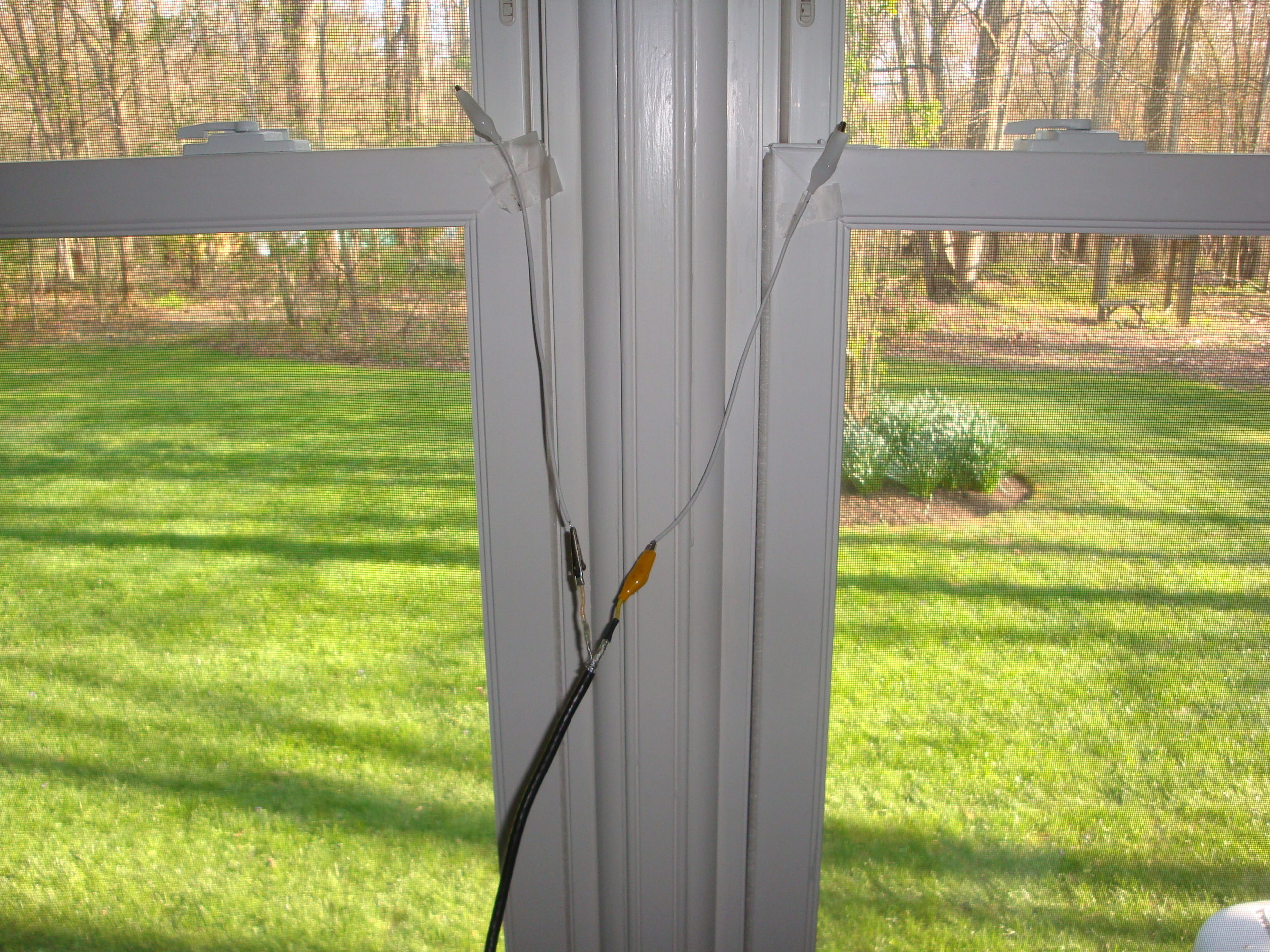
Image 8: Connection Wires Antenna
The results of all these tests are below in Image 9:
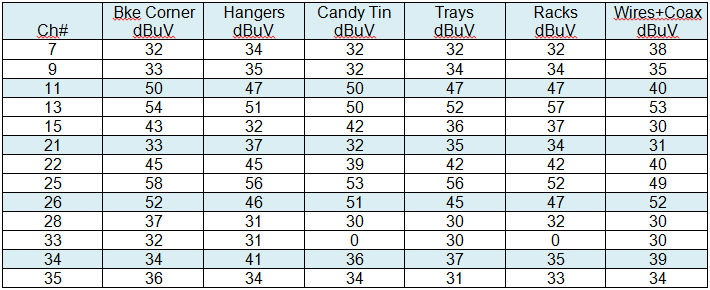
Image 9: First Tests Antenna Data Grid
In looking at this data grid, we can see that the wires and coax alone did well, almost as good as the hangers or the candy tin antennas. So I decided to try again without the use of the extra wires.
This time I only used the following antennas:
- Two Disposable Aluminum baking sheets 14.25 X 11.5″
- Two metal clothes hangers, base: 16″
- Candy tin top & bottom, dia: 8.5″
- Wires used to connect to these items ~ 12.5″ long
I only tested the antennas that were easy to tape to the window and positioned closer together. I also tested to see if there would be any difference between the cookie trays if I attached them from the center, compared to attaching them at a corner.
The first test was for the backing sheets antenna corner connected test:
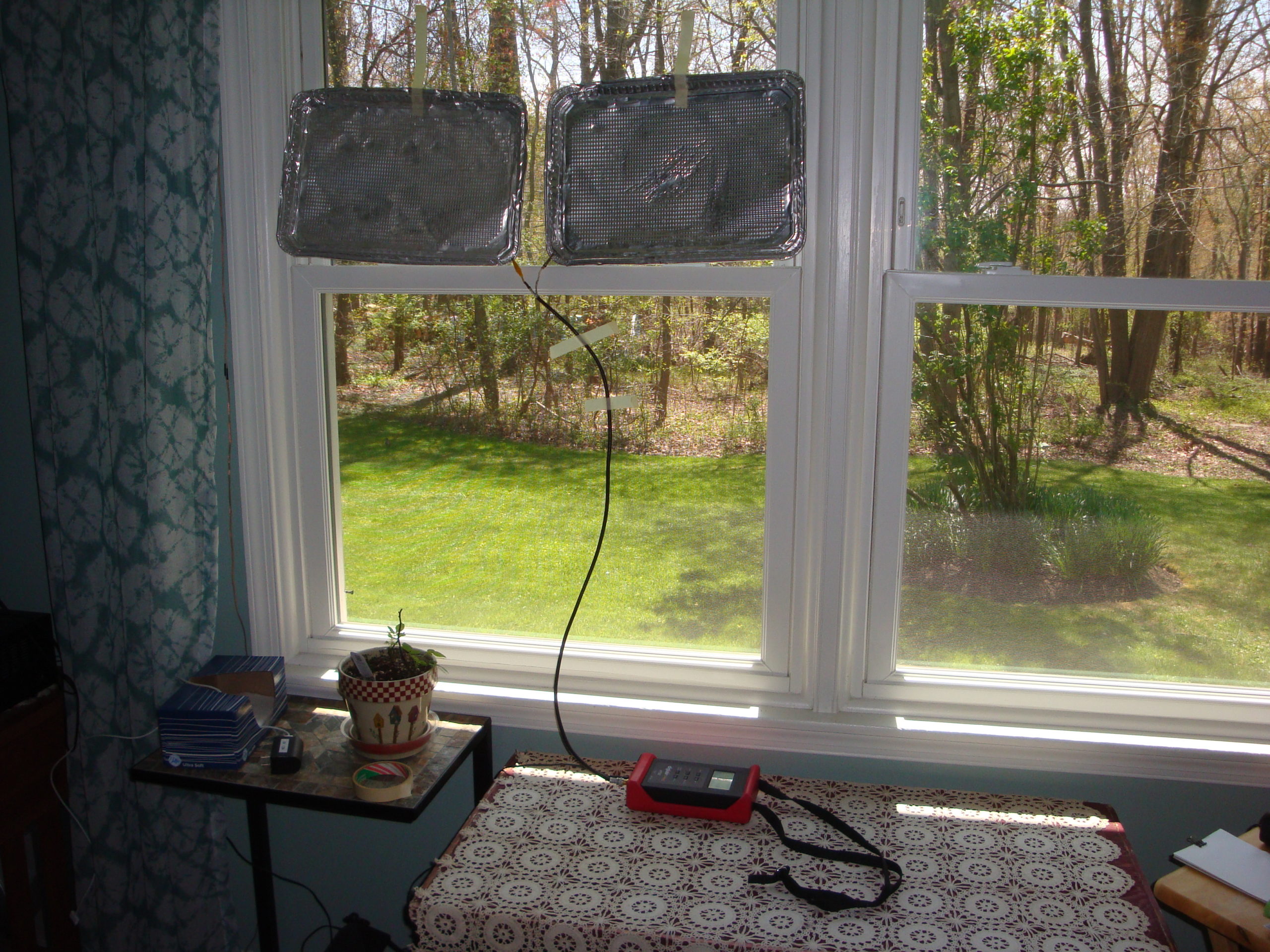
Image 9: Backing Sheets Antenna Corner Connected
Using the same antenna but center connected:
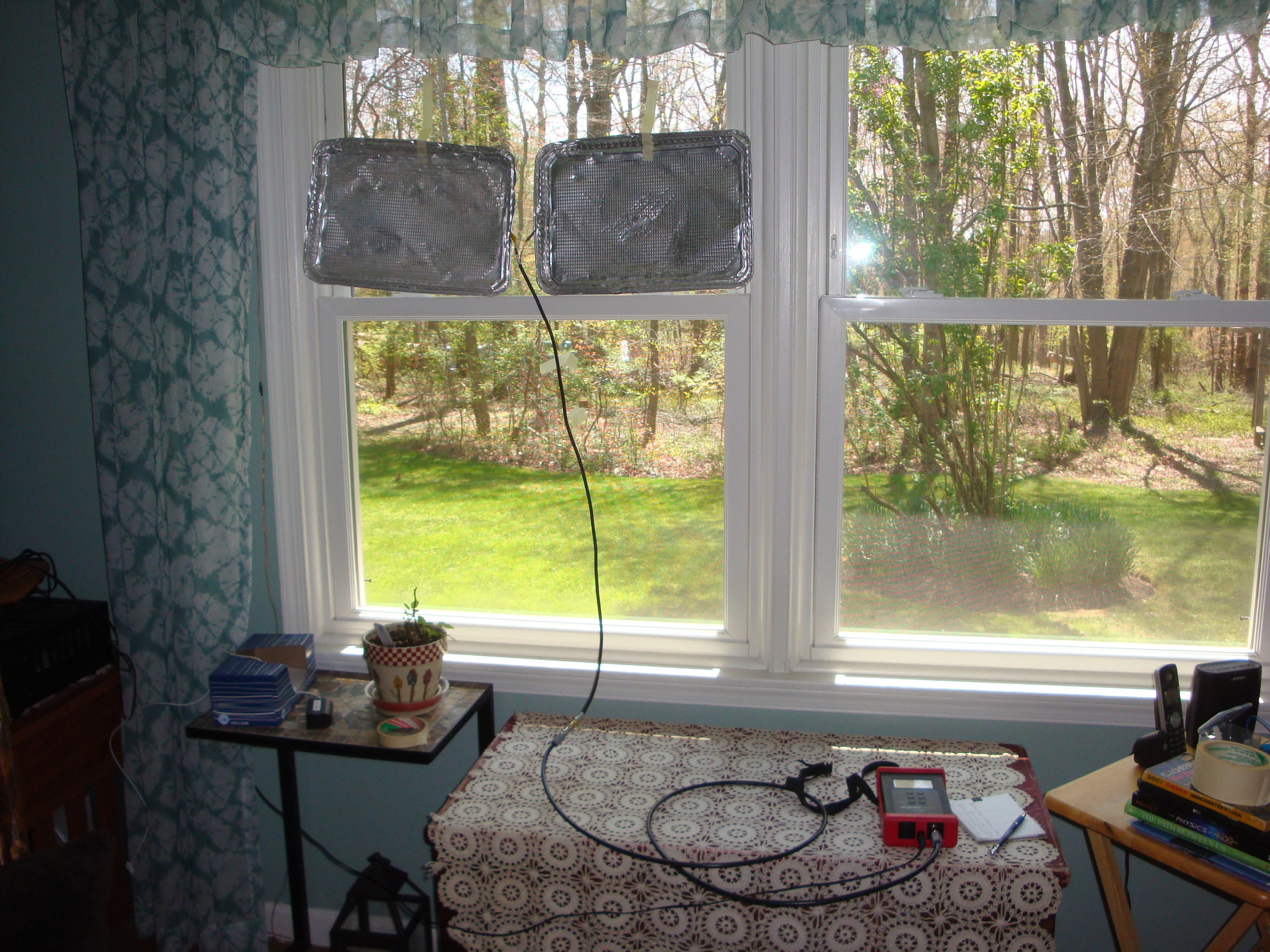
Image 10: Backing Sheets Antenna Center Connected
Next, I tested the clothes hanger Antenna which was connected the same way as before but with the shorter connection wires. (No photo of that one.) The last antenna tested below was the candy tin antenna.
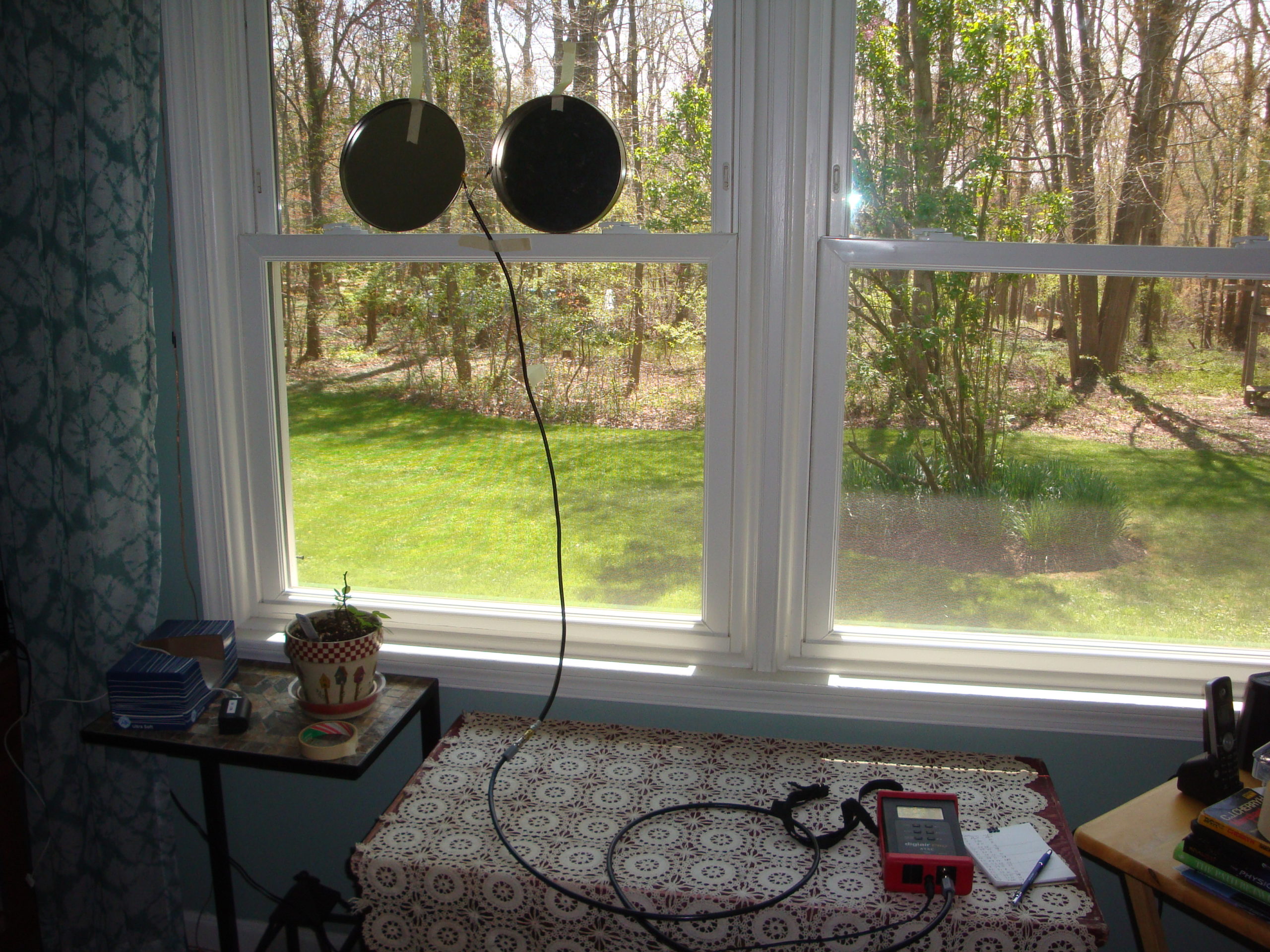
Image 11: Candy Tin Antenna
The last test was with just the coax and the short connections as an antenna:

Image 12: Coax and End Connectors Antenna
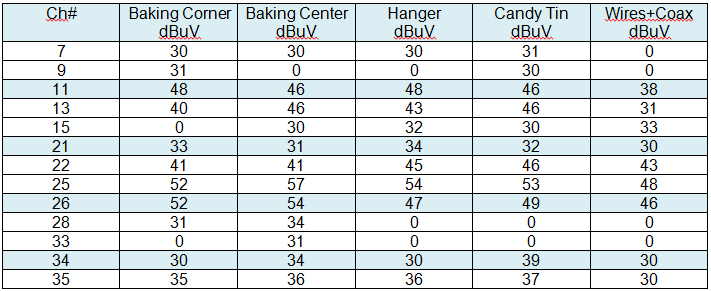
Image 13: The Short Wire Test Data Grid
It can be seen that the shorter connection leads add less to the overall antenna signal reception. I’m sure if I also added clip-on coax RF chokes, I could get the TV signal contribution of the outside of the coax even lower.
Rather than run more tests, I figured that, in an emergency, getting more TV signal is better. I’d suggest that you try each of these emergency antennas and coax with or without the extra-long connector and use the one that works better for you. Build a coax cable with the standard F connector on one end and then some alligator clips on the other end so you can attach to anything available if needed.
By emergency, I’m thinking that if you don’t bother with OTA TV but either Internet, cable, or satellite, you will lose all TV signals if the electricity goes out. This also happens if you use an OTA antenna with an amplifier. Again, if the power fails you’ll have no TV signals.
You can certainly use radio if you have one, but if you’d rather have a working TV, then perhaps one of these emergency make-do antennas will help you get important news.
Until next time, Happy OTA DTV viewing!
All my blog articles are listed at: Karras’ Corner
or
Karras’ Corner Article Links at the KE3FL Web Site




